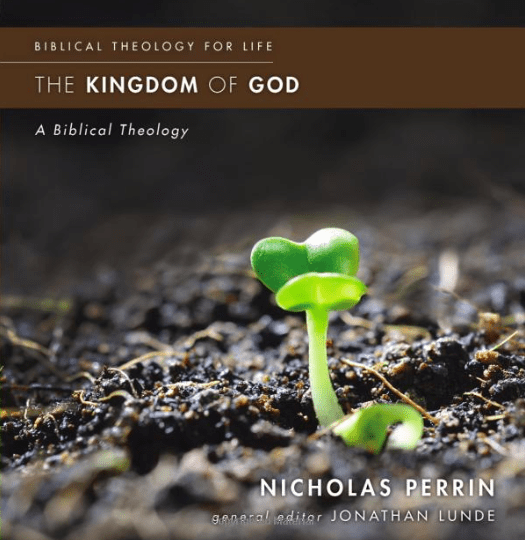 Following Tim Keller in The Reason for God we have now presented and discussed seven of the biggest objections raised against the Christian faith. None of these objections are fatal to the historic Christian faith when examined objectively. But this is not enough Keller says — it is time to go beyond doubts and questions and to begin to construct a reason for belief. But first…a brief intermission:
Following Tim Keller in The Reason for God we have now presented and discussed seven of the biggest objections raised against the Christian faith. None of these objections are fatal to the historic Christian faith when examined objectively. But this is not enough Keller says — it is time to go beyond doubts and questions and to begin to construct a reason for belief. But first…a brief intermission:
In constructing a reason for faith Keller proposes that we first consider the historic Christian faith – not our denominational distinctives, however dearly we may hold them. Keller in his book is making a case for the truth of Christianity in general expressed in the ancient rule of faith in early church fathers and the early ecumenical creeds. In this context Christianity is defined as:
…the body of believers who assent to these great ecumenical creeds. They believe that the triune God created the world, that humanity has fallen into sin and evil, that God has returned to rescue us in Jesus Christ, that in his death and resurrection Jesus accomplished that salvation for us so that we can be received by grace, that he established his church, his people, as the vehicle through which he continues his mission of rescue, reconciliation, and salvation, and that at the end of time Jesus will return to renew the heavens and the earth, removing all evil, injustice, sin, and death from the world.
All Christians believe all this—but no Christians believe just this. (p.117)
This is an important point – isn’t it true after all that all Christians, irrespective of denomination or “brand,” worship the same God and the same Lord Jesus Christ? One could argue that our denominational distinctives are predominantly interpretations in cultural context. Certainly our argument for the Christian faith should, first of all, be general and inclusive, not specific and exclusive.
Second, our argument should be not for proof but for reasonableness.
We are wrong to believe that we will ever construct an irrefutable argument or proof for the existence of or the nature of God. This is an impossible task. Rather we will look at preponderance of evidence and the viability of a Christian world view, taking into account all of the evidence we have available. Even in science we have no absolute proof – only empirically based theories that organize and explain the evidence better than anything else available. A theory is accepted if it explains and predicts in the simplest and clearest fashion— a theory is refined and improved, sometimes substantially, sometimes incrementally, in the light of new evidence, observation, and information.
Keller challenges his reader to look at the evidence for the Christian faith a little differently than the strong rationalism of Richard Dawkins or of some aggressive Christian apologists. He offers a different image of God and challenges the reader to look at the world through Christian spectacles to see if the explanation coheres.
If the God of the Bible exists, he is not a man in the attic, but the Playwright. That means we won’t be able to find him like we find a passive object with the powers of empirical investigation. Rather, we must find the clues to his reality that he has written into the universe, including us. That is why, if God exists, we would expect to find that he appeals to our rational faculties. … It also means that reason alone won’t be enough. The Playwright can only be known through personal revelation. (p.123)
 The last emphasis on personal revelation could be reworded as personal relationship. The God revealed in scripture is a God who came to, walked with, and at times dwelt among his people created in his image. This was true in the garden of Genesis 3, with Abraham, with Moses, with Samuel and the prophets, in the Tabernacle, the Temple, and ultimately in the incarnation. God does not simply provide information about himself, he is a key actor throughout the story.
The last emphasis on personal revelation could be reworded as personal relationship. The God revealed in scripture is a God who came to, walked with, and at times dwelt among his people created in his image. This was true in the garden of Genesis 3, with Abraham, with Moses, with Samuel and the prophets, in the Tabernacle, the Temple, and ultimately in the incarnation. God does not simply provide information about himself, he is a key actor throughout the story.
He wrote himself into the play as the main character in history, when Jesus was born in a manger and rose from the dead. He is the one with whom we have to do. (p. 123)
The picture to the right just above was taken on the edge of the Sea of Galilee at Capernaum, or more accurately Kfar Nahum, just down from the house identified from very early on as Peter’s house. This is a real place, where people lived, and where Jesus walked, ate, and taught. The Christian story is grounded in place, grounded in history, and most importantly, grounded in relationship.
Before we continue on to work through the reconstruction of the Reason for God, lets consider a question or two:
If you believe the Christian story — why? What convinced you to become a Christian? How big a role is played by faith?
If you don’t believe, what are your principal reservations?
If you wish to contact me directly you may do so at rjs4mail[at]att.net.
If interested you can subscribe to a full text feed of my posts at Musings on Science and Theology.











